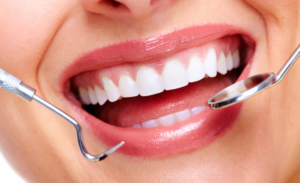Fencing can add security, privacy and aesthetics to a home. It is available in many different materials and styles.
Fence laws in the US were created to require livestock owners to fence in their property. But these barriers also affect ecosystems, from increasing spider abundance to interrupting the long-distance migration of gazelles. Visit Our Website to learn more.

A fence is a physical barrier that can protect homes, businesses, and other properties from unwanted entry. In addition to being a deterrent, it can also enhance privacy by limiting visibility into a property. Fortunately, a range of security features are available that can turn a standard fence into a powerful line of defense against theft and vandalism.
In criminal terms, a fence is a person who buys stolen goods and sells them at a profit. The practice is widespread and plays a major role in organized crime, as thieves can easily find a ready market for their stolen goods through fences. The thief who sells to a fence typically agrees to sell for less than the value of the good, because it reduces the risk of getting caught by law enforcement.
Fencing can take many forms, from a simple wooden structure to an intricate palisade. Generally, it involves a series of horizontal posts joined by horizontal rails. The posts are often connected to each other with spikes, or a combination of spikes and nails. In the case of an electric fence, a series of wires are woven through the rails to create an electric field that can be triggered by human contact or animal interference. The pulses can also be adjusted to match specific security needs.
High-security fencing is usually designed for military bases, prisons, and other sensitive areas. It is made from concrete or steel and equipped with sensors, cameras, and other security features to prevent unauthorized access and vandalism. It requires extensive installation and maintenance, but is a cost-effective way to ensure the safety of a site.
A security fence can be built using a number of different materials, including wood, metal, or stone. Steel security fences are typically made from solid steel bars and are highly resistant to physical attacks. They are also highly durable and are able to withstand harsh weather conditions. They are often topped with razor wire for added protection. In some cases, fences may even be armed with machine guns to add an additional level of security.
Privacy
Unlike standard perimeter fences, privacy fences are specifically designed with seclusion in mind. They typically enclose smaller areas, feature more high-end materials, and offer higher levels of privacy. Aside from a private backyard, you can also incorporate a privacy fence into other outdoor living spaces like patios and gardens.
Homeowners seek privacy fences because they create intimate outdoor spaces where families can relax or entertain without nosy neighbors peering over the yard’s fence line. In addition, they keep children and pets safe by defining their boundaries. A well-maintained privacy fence also increases a home’s value by creating curb appeal.
One of the best ways to add privacy to your backyard is by planting trees and shrubs that can grow to block the view of your garden or backyard from neighboring properties. This option is ideal for homeowners who don’t have the time to maintain a traditional fence.
Aside from planting trees and shrubs, you can also build a fence around an existing tree to create a backyard privacy oasis. Wooden fences are a popular choice for privacy fencing because they blend beautifully with natural surroundings and bring warmth to a backyard. In addition, they are durable and resistant to rot and insect infestation. Furthermore, they can be customized to match a homeowner’s aesthetic preferences. For example, you can choose between a picket or horizontal slat design.
In addition to adding privacy, a privacy fence can help reduce noise pollution from nearby roads or commercial zones. It can also act as a wind barrier for residential properties in areas with strong gusts.
Whether you’re looking to install a privacy fence for your home or business, it’s important to consult with local professionals to ensure that the project meets all requirements and expectations. From zoning regulations to specific installation techniques, you need to be familiar with these issues before you begin the construction process. This will prevent costly penalties and delays in the long run. It’s also wise to check local guidelines on fence height and placement, which may require obtaining permits.
Durability
In addition to security and privacy features, a fence must be strong and durable enough to stand up to the elements and withstand the daily stresses of life. When choosing fencing, homeowners and commercial property owners must evaluate several factors that impact a fence’s durability, including the type of material, installation methods, and maintenance practices.
Durability features play a significant role in the cost of a fence and its long-term performance. Different materials have unique strengths and weaknesses that can be beneficial or limiting, depending on the environment they’re installed in. For example, steel and wrought iron offer unparalleled strength, but may require a higher upfront investment than other fencing materials. However, these types of fences are highly resistant to damage and can last for decades with minimal maintenance.
Another important consideration for durability is the type of wood used to create a fence. Hardwoods, like cedar and teak, are more durable than softwoods, such as pine and fir, which can easily warp and break over time. Regular staining and sealing can help extend the lifespan of a wood fence.
Other options for durability include vinyl, aluminum, and composite fences. Vinyl and aluminum fences are known for their resistance to rot and pests, and can be painted or stained to enhance aesthetics. These fences are also typically lighter than other fencing materials, making them more versatile in terms of style and function. Similarly, composite fences are a popular choice for their durability and low maintenance requirements.
When selecting a fence, it’s important to choose a reputable brand and manufacturer. This not only ensures a high quality product but can also provide peace of mind in the form of warranties and customer support. Renowned brands, such as Trex Fencing and SimTek, are known for their commitment to excellence and the superior durability of their products.
Ultimately, the most durable fences are those that are properly installed and maintained. This includes regular cleaning and inspections for damage, as well as timely repairs. When a fence is regularly cared for, it will remain strong and sturdy over time, making it a worthwhile investment for homeowners or commercial property managers.
Aesthetics
A fence is more than just a boundary, it can be the perfect complement to your home. The right color, finish and design can elevate your property’s curb appeal by blending seamlessly with the landscape and architectural style of your home. We’ll discuss how to select the perfect fence materials that enhance your outdoor aesthetic and create a cohesive, visually appealing look.
Whether you want the rustic warmth of wood, the modern sleekness of vinyl, or the timeless elegance of metal, the design of your fence significantly influences its aesthetics. We’ll explore the many ways you can use decorative details, like lattice tops and cutouts, to add contrast and dimension to your fence.
The height of your fence also contributes to its aesthetics. We’ll explain how selecting the appropriate height for your needs in proportion to your landscape and architecture will contribute to a harmonious appearance that complements your home.
Once you’ve determined the functionality and privacy requirements for your fence, it’s time to begin considering the design. We’ll explore the myriad of fence styles to determine which one will best suit your space and complement the architectural elements of your home.
As sustainability becomes a priority for homeowners, eco-friendly materials like bamboo and recycled wood are becoming increasingly popular. These sustainable alternatives are durable and visually appealing. We’ll also discuss how you can incorporate smart features, such as solar-powered lighting systems and security cameras, into your fence to improve the safety and ambiance of your home while reducing energy consumption.
We’ll also discuss the role that light and shadow play in the visual appeal of your fence. The use of different finishes to reflect the changing hues of sunlight throughout the day can dramatically alter the appearance of your fence. Adding textured surfaces, like rough stones and stucco, or incorporating the vertical beauty of climbing plants, like ivy or a climbing hydrangea, can transform your fence into an artful work of landscape engineering.
A fence’s color is one of the most defining characteristics and can have a powerful impact on your curb appeal. We’ll explore the psychology of color and how it can affect mood, as well as discuss how to coordinate your fence with the colors in your landscape and exterior palettes.





